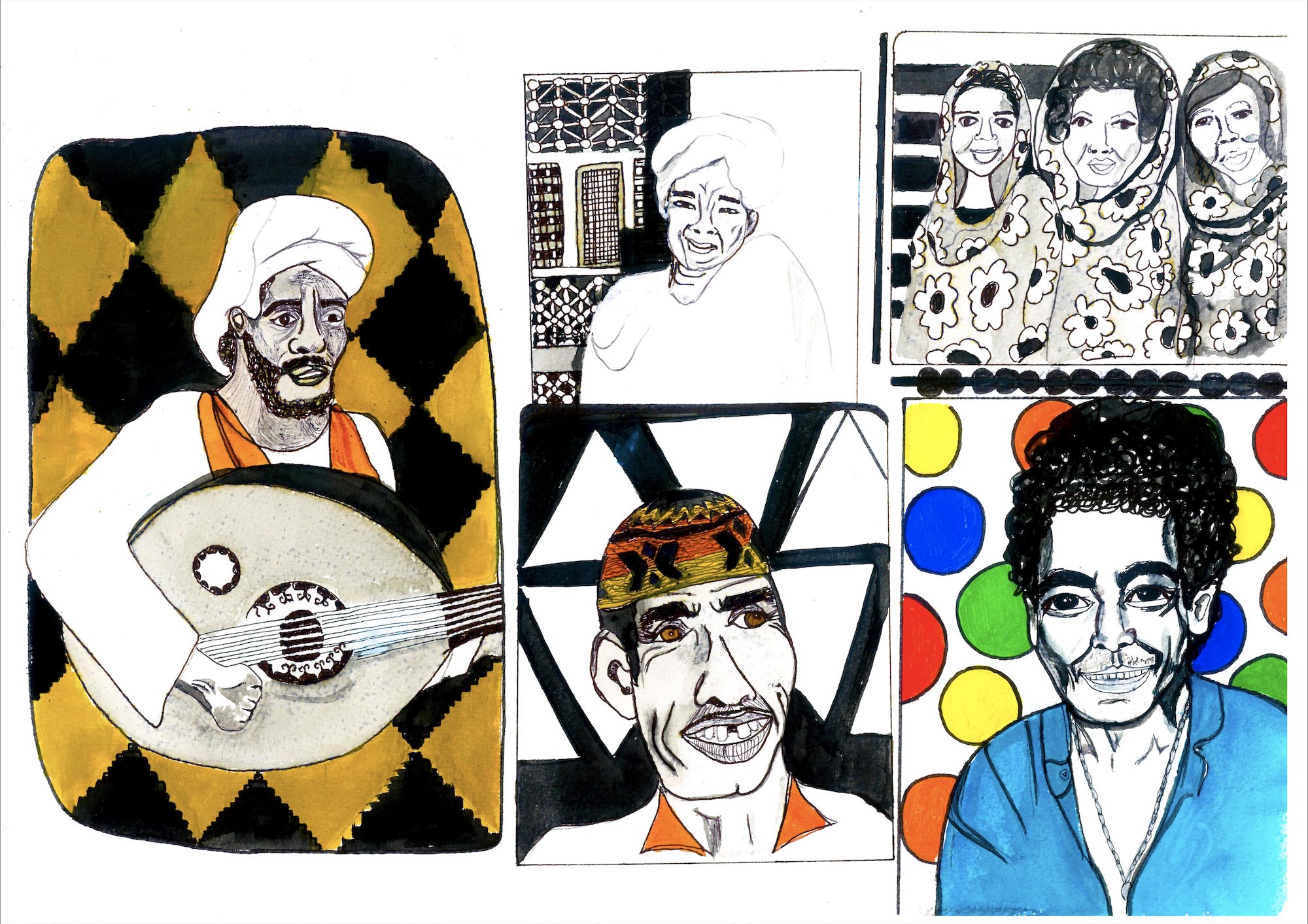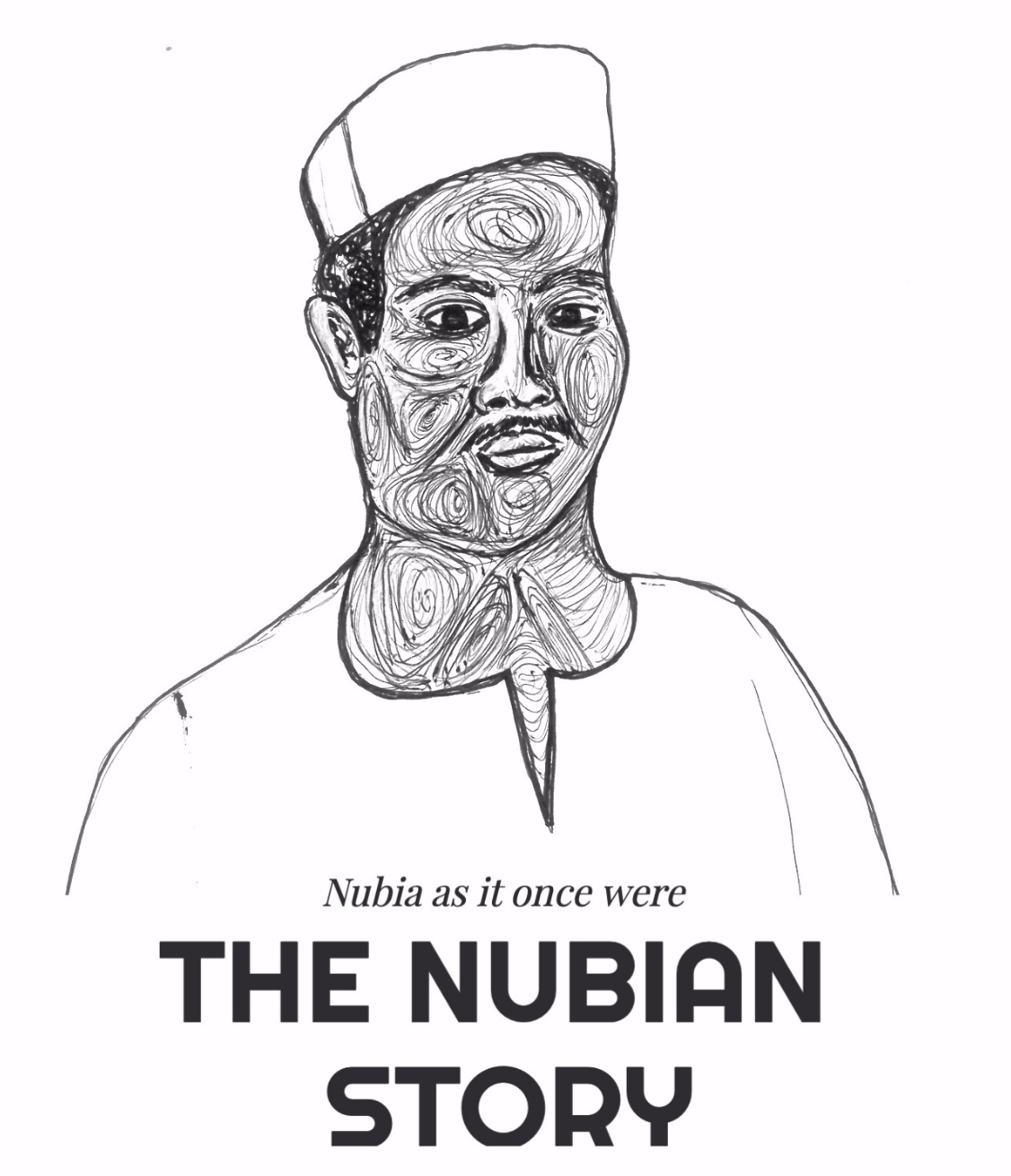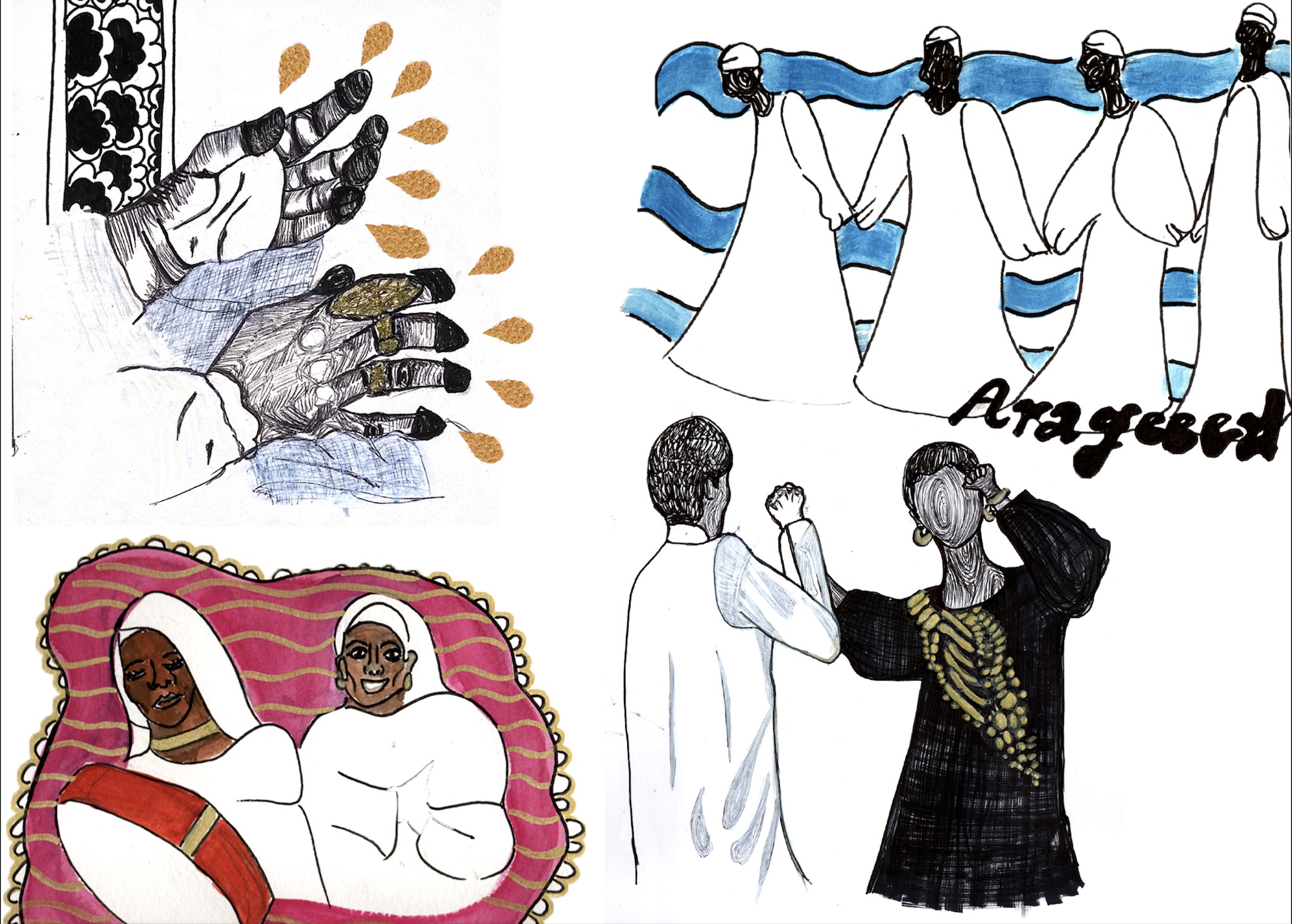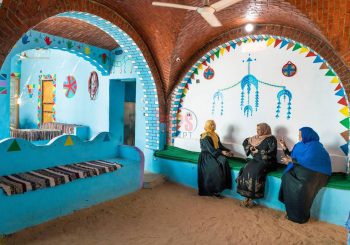The Nubian Story, an audio narrative accompanied by a set of illustrations created by Egyptian graphic designer Farida Eltigi, is currently being displayed at an exhibition under the UN Climate Change Conference (COP26) in Glasgow, Scotland, UK.
Titled The Colour of the Climate Crisis, the exhibition strives to explore the relationship between racial justice and climate justice.
Through her work, Eltigi aspires to promote social change and shed light on marginalized groups. The Nubian Story was done in collaboration with The Nubian Gallery and Nubian(Q) to help preserve and protect the endangered Nubian heritage and culture.
Egyptian Streets spoke to Eltigi about the significance of her work being featured on such a prominent platform and the opportunities that may arise as a result.
The Colour of the Climate Crisis exhibition examines the relationship between racial justice and climate justice. How does The Nubian Story fit in this regard?

The Colour of the Climate Crisis is a great opportunity to highlight the Nubian culture, as the exhibition focuses on the relationship of Black and People of Colour and the environment. As an indigenous ethnic group of Egypt and Sudan, The Nubian Story dives deeply into illustrating Nubian traditions and rituals, from clothing to architecture, from an intimate and personal perspective. The most important aim of the project is, through a collection of artworks, to preserve the Nubian identity.
The Nubian Story sheds light on the events that occurred to the Nubians from Ancient times until today. It visually narrates how nature, from the Nile to the palm trees, influenced the Nubian culture and traditions whether that is through dance, music, rituals. As Nubians were victims of environmental change, this project aims to preserve and highlight the story of Nubia, while also exploring the impact such environmental change has left on the Nubian identity today.
What were you most surprised to learn about Nubian culture through your work on this project?

With The Nubian Story, I learned so much about this ethnic group, which all my life I thought I knew of and recognized, in reality, I realized I knew almost nothing about them, considering we are of the same nationality. From that point on, I decided to actively educate myself on the Nubian history and culture to inform this project. Through various Instagram and Twitter accounts, I created a survey which I sent out to more than 30 Nubians and 50 non-Nubians to recognize if my lack of awareness regarding this ethnic group’s experiences is an evident problem. I began having conversations with the Nubian community. The answers I received from both surveys confirmed to me that a significant problem of underrepresentation, displacement, and neglect exists towards this community.
COP26 is a prominent global event, and being featured in this exhibition will result in a lot of visibility. What do you hope this visibility will achieve?
The concept stems from the lack of knowledge on the displacement that occurred to Nubians and their struggle to preserve their cultural identity. I hope that from this exhibition, the viewer would be captivated by the vibrant Nubian culture while understanding and empathizing with the struggles that Nubian Egyptians go through. When reaching out to the Nubian community, and listening to my collaborators, many subjects spoke about the underrepresentation, how they felt unheard and unseen even in their own country.

I realized the best way to bring about empathy and hopefully, change, for Nubians, is by raising awareness and highlighting their history, culture, and struggle. The Nubian Story is evidence of the strong link between our identity and the environment and nature surrounding us. I hope my work and the 23 other amazing pieces, exist as a reminder of the tragic yet urgent reality of the climate crisis, and other environmental factors and their impact on BIPOC (Black, Indigenous, and People of Color).
Any plans to further explore this project on the ground in Nubia? Or any future projects tackling the climate crisis in particular?
I am considering turning my illustrations into an animation film, that would give life to the pieces and possibly merge music further into the project. From my research and my narrators, I realize how significant musicians like Hamza Eldin and Ali Hassan Kuban are for preserving Nubian culture, language, and identity. I genuinely hope that The Nubian Story can be educational to those who are unaware of the events, culture, and traditions of this beautiful yet endangered ethnic group.






Comments (0)